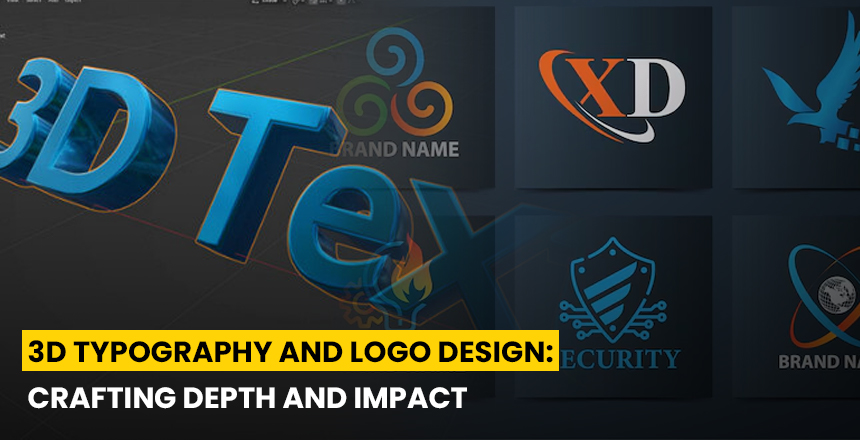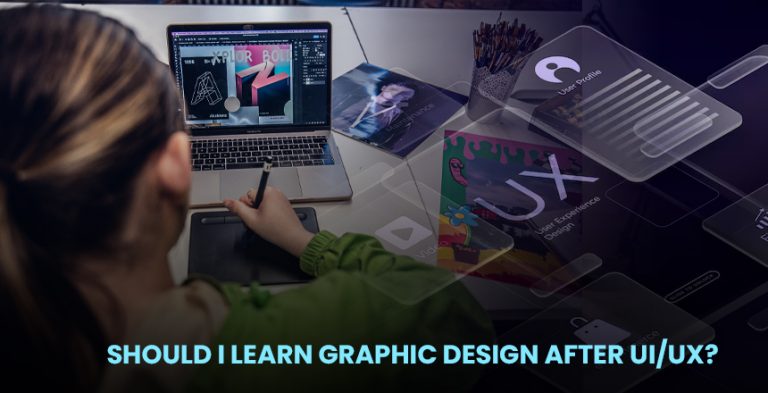In the rapidly changing design world, 3D typography and logo design have been the key
instruments for the transformation of the status quo into a reality by holding people’s attention &
digitizing brands. These methods do not just remain at the flat design stage, but they also imbue
depth, added reality, and visual contrast that makes it more interesting. Just like with spatial
effect these 3D type and logo brands make the viewer feel like they are part of what they see,
thus making it more convincing and memorable.
Understanding 3D Typography
3D typography refers to the design of letters that create an impression of being in volume,
dimension, and perspective. Through the use of shadows, highlights, gradients, and real-looking
surfaces, the graphic designers can turn a two-dimensional text into a seemingly
three-dimensional one that flies out of the screen or the page. Thus, it delivers a feeling of
actualness and materiality that makes the viewer attractive.
Key Characteristics of 3D Typography:
- Depth and Perspective: The application of vanishing points and gradients to give the illusion
of depth. - Shadows and Highlights: Of course, they are the defining factors of light sources and it is the
main reason of adding reality. - Textures and Materials: Reproduction of metals, woods, glasses, or other surfaces for the
sake of unique effects. - Dynamic Movement: The introduction of animations or effects to the letters so that they can
be more lively.
Modern 3D typography has entirely transcended the decorative function; it has rather become
pivotal in multi-dimensional text communication. For example, a technology firm may apply a
shiny, metallic 3D font to convey its innovative side, while a kid’s brand would use colorful,
whimsical 3D letters to create a playful atmosphere.
The Role of 3D in Logo Design
Logos are the main element of a brand identity and 3D design is the cherry on the cake. By
incorporating a three-dimensional aspect, designers can produce logos that look more
compelling and remain in memory easier. A 3D logo can, for example, help a brand to develop
an absolutely new character and to give it a more visible chance against the competition on
crowded visual markets.
Benefits of 3D Logo Design:
- Boosted Clarity: The vividness and multi-dimensional nature of 3D logos make them easily
attractive in various forms of advertising, be it online or printed. - Flexibility: 3D logos are lively and can easily be altered for the use of animations, holograms,
and virtual reality setups. - Contemporary Allure: The 3D ambiance of such designs is linked to the enterprise of the
modern era and the vision of it.
For example, the gaming sector may gain a lot from a 3D logo that shows the virtual world that
their products create. An architectural company could apply its skills in mathematics by
programming a 3D logo with straight lines and dimensionality to prove its point.
Techniques for Crafting 3D Typography and Logos
Achieving awe-inspiring and chic 3D visuals is a combination of not only the artist’s creativity but
also the technical proficiency and attention to detail. Below are the methods that designers
typically implement:
- Modeling and Rendering: Platforms such as Blender, Cinema 4D, and Adobe Dimension
enable the designers to source and present realistic 3D forms and texts. - Lighting and Shading: The lighting setup is a major factor for the overall reality of the design,
which is determined by the way the design interacts with the light sources and shadows. - Texturing: Real-life textures like wood grain, metallic sheens, or matte finishes can be added to
the designs in a semi-automated process, thus improving the overall visual appeal. - Finishing Touches: The design is polished and added special effects like glows or animations with tools such as Adobe Photoshop and After Effects.
The designers can create not only a fantastic but also a strategically aligned logo and
typography for a brand by utilizing the combination of these techniques.
Trends in 3D Typography and Logo Design
The design sector is in a constant state of change, and being foremost in the innovation of 3D
elements are the elements that follow it. A few of the present trends that impact the industry are:
- Neon and Glow Effects: Bright and glowing 3D Designs give a feeling of a futuristic vision and
brightness. - Isometric Designs: Frame a fixed perspective to create a playful, puzzle-like logo and
typeface. - Holographic Textures: Mirror effects and rainbow-like add a modern touch to the look.
- Dynamic Animations: Logos and types that move, rotate or change their form provide the
interactive edge.
These trends point to a swimming movement to create new types of designs that are not only
nice to see but also are something that the viewer interacts with and learns from.
Applications of 3D Typography and Logos
With its wide range of applications in different industries and platforms, 3D design has become a
powerful tool that we can use to promote and highlight various media like:
- Digital Media: What’s sorely missed is the addition of 3D elements in the web experience,
interactivity in the app, and cool effects in the social media campaign. - Print Collateral: Business cards, brochures, and packaging that have a good balance of3D
logo. - Advertising: billboards, banners, and commercials that are 3D animations that make it more
interesting and informative. - Entertainment: Movie titles, game interfaces, and promotional posters where the font and other
graphics are in 3D form.
A good example is that a movie title with dramatic 3D typography can exactly make the
audience feel the way they are supposed to feel. In the same way, a product’s packaging that
incorporates a 3D logo on it could stand out better than it would be on a shelf without a 3D logo.
Conclusion
Three-dimensional typographical and logo design along with the use of such have literally
reshaped the way brands practically communicate and convey their message. They now
provide a new sense of spatiality, and realism and thus evoke the human being’s association to
emotions. These outstanding visuals will definitely be a part of the list of instruments that one
needs to use in order to make an impressive brand. No matter if you are a designer discovering
novel paths or a brand desiring to form a footprint, 3D features will turn your visual
communication into an unforgettable mission.








